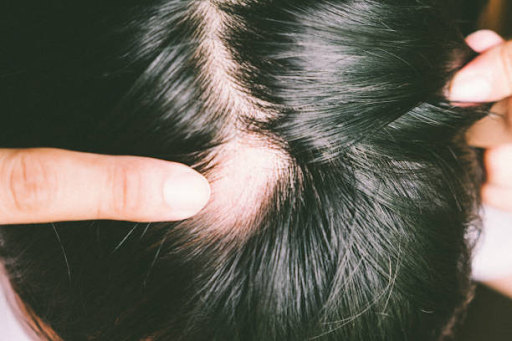
Alopecia Areata is an autoimmune disease that causes hair loss due to altercations in the immune system. It targets the hair follicles on different or all parts of the body. It can be found in both men and women, while the extent of it, as well as the course of this disease, differs from person to person. For some, it may be an episode, while for others, it may go on for a while or their whole lives. Alopecia mainly targets body parts with hair, including the scalp, arms, legs, eyes, eyebrows, etc. So, if you or anyone you know happens to be dealing with alopecia areata, rest assured that there are ways to treat it and possibilities of hair growing back. In this blog, we will explore the different ways how to stop Alopecia Areata from spreading any further in case you see early signs or are currently having Alopecia.
How To Stop Alopecia Areata From Spreading:
By going through this blog, you shall come across a few methods and treatments recommended by certified doctors on How To Stop Alopecia Areata From Spreading further.
Natural Methods:
Alopecia is a condition that targets the hair follicles. It is necessary to focus on the hair follicles to treat them well and nurture them.
Although there are many clinical methods to treat alopecia areata and possibly cure it as well, there are scientifically proven, natural ways to treat alopecia areata that you can give a try.
Additionally, according to well-known and certified doctors, the following are a couple of ways to increase growth and strengthen hair follicles.
1. Essential Oils:
In research conducted by the NCBI (National Center for Biotechnology Information), it was shown that using a mixture of essential oils of thyme, rosemary, lavender, and cedarwood mixed with jojoba oil and grapeseed oil for additional daily massage to the scalp proved to be very beneficial for patients having alopecia as the mixture followed by a massage by the grapeseed oil and jojoba oil, helped 16 out 43 people who were their test subjects, develop hair on the scalps.
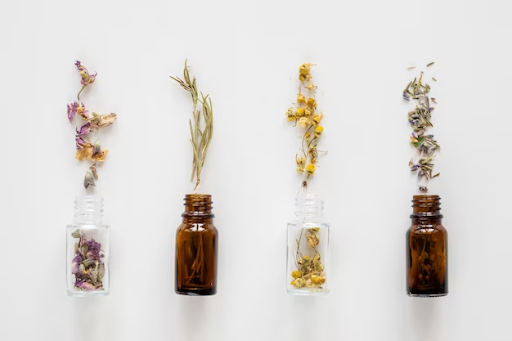
Essential oils of thyme, rosemary, lavender, and cedarwood have been clinically proven. They are mostly known to have several benefits ranging from anti-inflammatory properties to stimulating hair follicles for better and stronger hair growth.
So, you are looking for a natural way of dealing with or treating alopecia areata. In that case, you may use this method that’s foolproof and backed by successful scientific research.
The process of treatment is simple.
- Take either jojoba oil or grapeseed oil and mix in a few drops of each essential oil (thyme, rosemary, lavender, and cedarwood).
- Apply directly to the roots and the affected area.
Continue this process daily until you start to see results.
2. Onion Juice:
Applying onion juice to the scalp continuously 2 months had proved more than effective as most of the test subjects or patients with alopecia areata had shown signs of hair regrowth by the sixth week of the trial. After the 8-week mark, it was discovered that men in the experiment grouping had grown more hair than women.
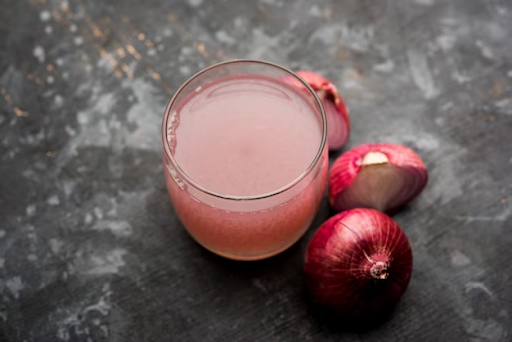
From this, we can understand that onion is a solid solution, as the sulfur in onion greatly promotes hair growth and strengthening. Onion has been widely known for its beneficial properties related to promoting hair growth and strengthening.
It has also been found that onion or onion juice also helps in collagen production, which is helpful for healthy skin and hair growth.
The process of treatment is simple.:
- Cut up an onion
- Grind it up till it’s paste
- Using your hands or a cheesecloth, squeeze out the juices into a container.
- Go for a squeeze bottle, which will help you apply the juice directly to the scalp
- Massage the juice for about a minute, then leave it in for 15 to 20 minutes before washing it out.
Do this daily for at least 2 months to see progressive results in the due course of the treatment.
There are natural treatments for alopecia areata, but there are also professional methods that are much more effective and administered by doctors. So if the above natural solutions do not work out for you, here is how to stop alopecia areata from spreading by following professional methods.
Conventional Treatments:
Topical medications are commonly used as conventional treatments to promote hair growth on the scalp. Oral immunosuppressants are also used to stimulate the growth of hair. The medications act on immune cells to release the hair follicles from the grip of the immunological attack.
However, there is a risk of severe side effects from conventional treatments that can affect how well your body’s vital organs function. It is, therefore best to choose the safest and most natural remedies, like homeopathic treatment for alopecia areata.
How Dermatologists Diagnose and Treat Alopecia Areata:
Before administering any form of treatment the dermatologist or doctor will first take a few things under consideration
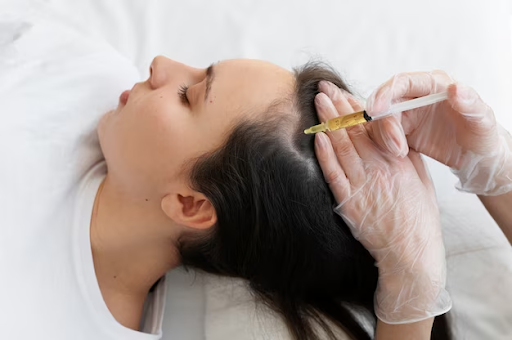
- Amount of hair loss
- Hair lost in which area
- Period of the condition before consulting a dermatologist or doctor.
- Age of patient (a different treatment may apply to children)
One Or Two Spots Existing For Less Than A Year:
Depending on your age, your dermatologist may recommend waiting and seeing as many people, more often children, regrow their hair with any treatment.
So, if you cannot see any regrowth, or it’s slow-paced or is not quite the way as expected, the dermatologist will recommend medications to apply to the affected area that needs regrowth.
Medications like Corticosteroids to stimulate hair growth and minoxidil (Rogaine®) to maintain the newly grown hair are common treatment regimens.
Children Aged 10 or Lower:
Though children are likely to regrow their hair in the affected area without treatment, the case may not be so often. In this case, the following are some treatments the dermatologist may recommend:
Corticosteroid: This is a potent medication for children that can help in the regrowth of hair alone. Application must be done once or twice a day, which should be effective enough for children.
Minoxidil: Patients using this medication may be able to maintain their hair growth. Most patients begin using minoxidil as soon as they cease taking corticosteroids. Since minoxidil rarely causes side effects, it’s regarded as a suitable medication for kids.
For Children Aged 10 And Above:
Treatments in this category are based on the amount of hair loss.
A dermatologist may recommend JAK inhibitors or contact immunotherapy, which are licensed for the treatment of alopecia areata for patients aged 12 and older who are experiencing significant hair loss.
Patchy Hair Loss in Adults:
Dermatologists may recommend the given treatments in this criteria:
Corticosteroid Injections:
A treatment option that can be useful for adults where corticosteroids will be injected by your dermatologist directly into the areas where hair is falling out. Several shots will be required every four to six weeks.
In most cases, patients experience some hair growth back three months after the initial injection.
For those who have a few areas where they are losing hair, this is thought to be the most successful treatment. The test showed drastic hair regrowth over 12 weeks.
This treatment option is open to adults and considers a higher plausibility of pain tolerance compared to children.
Application of Corticosteroid:
As mentioned before, this method is a lot more gentle and is open to an adult who does not look forward to injection for their reasons. This treatment follows the application of the medication Corticosteroid directly on the bald spots once or twice a day according to the dermatologist’s instructions. Results are more effectively seen among children, so in the case of adults, it may take some time. But be consistent.
Anthralin:
This medication is applied to the areas of baldness, left on the skin for the duration prescribed by your dermatologist, and then washed off. There will be some skin irritation from it. You will also have to include minoxidil after your hair regrows for optimal results.
Minoxidil:
You can maintain the regrowth of your hair after it has grown back with minoxidil. You must apply this medication two or three times a day for it to work. It may be beneficial for the eyebrows, beard, and scalp.
Prolonged Hair Loss:
Alopecia areata as mentioned before is a condition that can either be a phase or an extensive condition.
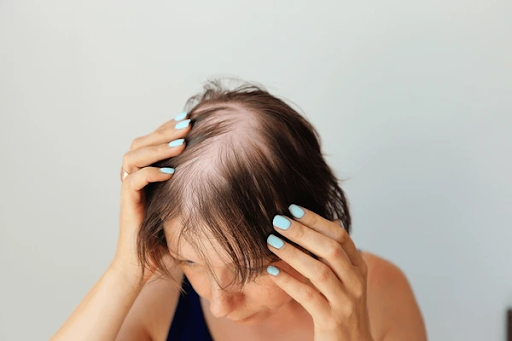
Most people have this condition while few people regrow their even in this condition.
The following are some of the treatments they can follow:
Contact Immunotherapy:
This treatment, also known as topical immunotherapy, aims to stop your immune system from attacking the hair follicles. This treatment involves your dermatologist applying the medications to the skin with no hair. Leaves it on for 48 hours during which the area must be covered and should develop a rash till the 36-hour mark.
This process will continue every week until either the hair grows back or at the end of 6 months, the treatment fails according to which the dermatologist may resort to another treatment.
JAK Inhibitor:
The active immune system is calmed by this kind of medication, which might promote hair growth. For those experiencing extensive hair loss, it is a promising treatment. Numerous studies demonstrate that a JAK inhibitor can increase patients’ regrowth by 50% or more.
JAK inhibitors may also aid in the regrowth of eyelashes and eyebrows in certain patients.
This treatment is also FDA-approved.
Adult patients with severe alopecia areata are treated with baricitinib. It takes one pill per day.
Adults, as well as kids aged 12 and up with alopecia areata that has resulted in significant hair loss, can now be treated with rociletinib. The medication is to be taken once daily.
Homeopathic Treatment:
Homeopathy’s approach to treating alopecia areata is safe. It causes no side effects, unlike conventional topical treatments or shots that carry the risk of chemical burn and damaging of the affected area, which is irreversible damage. Homeopathic treatment for alopecia areata effectively manages stress and enhances overall quality of life.
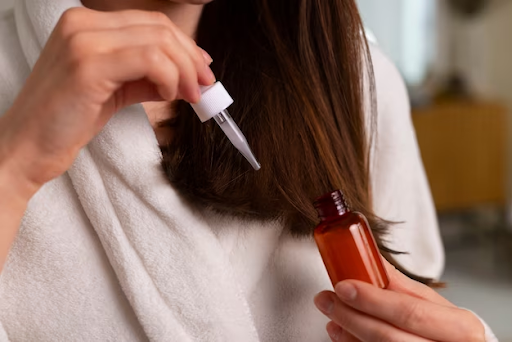
Homeopathic treatment is one of the best strategies for patchy hair loss. This treatments effectively stop the spreading of alopecia and significantly encourage hair growth.
Homeopathic substances like Thuja Occidentalis and Sabal Serrulata are greatly known for hair growth properties to treat alopecia areata. Natural inhibitors of a substance called DHS, short for Dihydrotestosterone, also promote hair growth.
The immune system can fight back more successfully when homeopathic remedies are used to increase its effectiveness.
Instead of temporarily relieving symptoms, homeopathic treatment addresses the root cause of alopecia. All ages and life stages can benefit from homeopathic remedies, including expectant and nursing mothers.
Conclusion:
So from this, now you know that, indeed, there are promised ways to stop alopecia areata from spreading further and possibly causing more discomfort in your life in any way.
So, no one medication or treatment fits all. Your dermatologist knows best which one shall fit your needs, and that will yield a luscious result at the end. The only trick is to be consistent and observant.
So now you know.
FAQs:
1. What is Alopecia Areata?
An autoimmune disease where due to altercations in the immune system, hair loss takes place in different or all parts of the body.
2. How to stop alopecia areata from spreading using natural remedies?
Use essential oils of Tyme, cedarwood, lavender, and rosemary mixed with grapeseed or jojoba oil, or use onion juice as a natural remedy to stop alopecia areata from spreading.
3. How long does alopecia areata last?
It is different in people depending on their age. In children, it is more likely to see hair regrow without any treatment while in adults regrowth can be seen after treatments. However, alopecia areata can also last a lifetime in some cases.
4. Where is the body more likely to lose hair due to alopecia areata?
Alopecia areata is most commonly seen in areas of the scalp, arms, and legs. However, in a few cases, alopecia can also be seen on nails.
5. How common is Alopecia Areata?
Alopecia Areatais somewhat common with 2% of people across the globe who either currently are having it, had it in the past, or will have it.
Born in India and raised in South Africa, Debosmita had a wonderful childhood and was exposed to a world of fantasy, imagination, and creativity. She finished school in Haryana and graduated from Adamas University Kolkata with honors in English language and literature. In college, her drive to dive deep into subjects grew 10 fold. She had a mind-opening experience there. She holds a great passion for writing and expressing herself while manifesting her drive to learn more through intense research. Going as deep as possible for content delivery so the reader fully understands the topic. She is also smart with wordplay and is an aspirant teacher as well.

